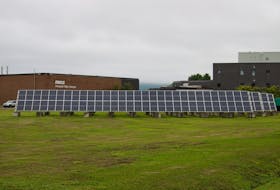Any Nova Scotian would agree that improvements are needed for the province’s power grid. Fortunately, those in charge appear to be on the same wavelength.
The impetus here is the number of outages we experience, or at least hear reported in the media, whenever there’s a storm. It’s not a matter of whether the lights are out somewhere in the province, it’s questions of where, how many customers, and when will it be restored in the various locations.
Weather patterns are indeed changing, with more severe events happening more often. What we might have once thought of as a storm with a magnitude that might be experienced once in 50 years can be anticipated far more frequently. That has scientists studying climate change saying that Canadian electrical utilities will have to work on improving their framework.
It will mean a lot more of the usual proactive maintenance, such as trimming trees along power lines. There’s a reported move among power companies to improve components in the transmission of power to withstand more severe conditions. But there’s plenty more that can be done with some creative thinking and expansion of technologies that are starting to take off.
We’re already seeing community-driven projects, for example, using wind energy to feed into the grid. And the occasional adventurous homeowner will invest in wind or solar to service the home, with any excess or unused power going into the grid and providing some payback to the owner through net metering.
Scientist Louse Comeau of the University of New Brunswick, in an article carried this week by The Canadian Press, said smaller grids – and of course, far more of them – are a way to spread around the generation of energy and at the same time reduce the size of a power outage area.
This is where it comes to thinking outside the box. The conventional pattern for power generation, what we’re used to now, is based on huge generating stations, fewer of them, and quite spread out. It’s the economy of scale, having a large plant producing lots of electricity, rather than many small ones.
It’s the more efficient way to go, but when it comes to a problem with the grid in that area, it can mean a far more widespread blackout.
The Canadian Press article also detailed a recent announcement by Nova Scotia Power of an “intelligent feeder” pilot project, involving the installation of Tesla Powerwall storage batteries in 10 homes in Elmsdale and a large grid-sized battery at the local substation. The batteries are connected to an electrical line powered in part by nearby wind turbines.
The idea is to test the capability of providing customers with back-up power, while collecting data that will be useful for planning future energy needs.
We can hope that continuing advances in technology and investment will improve the capacity for electrical energy storage – in more areas throughout the province. With growing interest in more localized generation projects here, there and everywhere, a power outage might become a minor blink, rather than a persistent headache.








